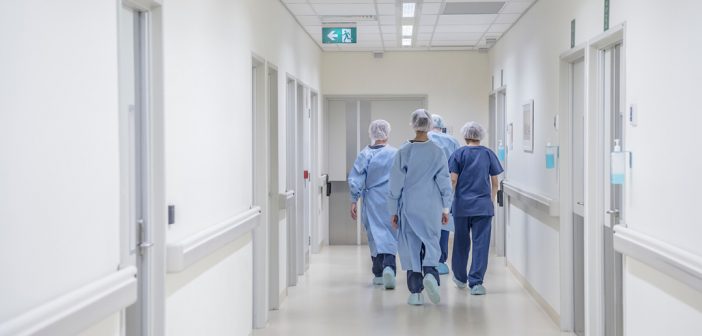LGB medical students report more mistreatment, study finds.
Burnout is a significant problem among medical professionals. Even before they join the workforce, nearly half of all US med students report symptoms, including emotional exhaustion and cynicism. Beyond the personal toll, burnout can compromise patient care and safety.
Medical students who identify as lesbian, gay, or bisexual (LGB) are more likely than their heterosexual peers to experience burnout, according to a study in JAMA Network Open.
“The health and well-being of trainees is intimately linked to the quality of patient care, physician retention, and is key to reducing care inequities,” lead author Elizabeth Samuels RES’16, MD, MPH, an assistant professor of emergency medicine, says.
Samuels says her experiences as a medical trainee and mentor motivated the study, which uses data from the Association of American Medical Colleges’ annual survey of graduating students.
“When my collaborators and I learned that the AAMC had added questions about sexual orientation to their annual graduating medical student survey,” she says, “we thought it would be a good opportunity to examine the experiences of LGB trainees generally, and more specifically, to examine whether medical student experiences of mistreatment and burnout varied by sexual orientation.”
The researchers didn’t know the gender identity of students who identify as transgender or genderqueer. They analyzed 26,123 responses, finding that 17 percent of LGB med students reported high levels of burnout, compared to 11.1 percent of heterosexual students. Potential causes include the intensity of medical training, strained finances, and unattainable expectations, the authors note.
LGB students also reported more perceived mistreatment. For example, 27 percent said they’d been publicly humiliated, compared with 20.7 percent of heterosexual students; 23.3 percent reported at least one instance of perceived mistreatment due to their sexual orientation, versus 1 percent of heterosexual students.
But Samuels notes that mistreatment didn’t completely explain the emotional strain experienced by LGB students, who were 30 percent more likely to experience burnout even after adjusting for these reported experiences.
The researchers found that LGB students reporting frequent mistreatment related to their sexual orientation had an eight times higher chance of burnout than heterosexual students. This difference was dramatic when mistreatment occurred more frequently, Samuels says. But at lower levels of mistreatment, the differences weren’t as extreme.
“I think this shows people’s resiliency—up to a point,” she says. Because the well-being of the health care workforce is strongly linked to the level of care that patients receive, Samuels says the study’s findings underscore the need for continued, comprehensive support and mentorship for LGBTQ students, and the importance of institutional culture change to create healthy, diverse, inclusive learning environments.
“Not only is that helpful for individual trainees, but building this workforce is a key strategy in addressing health inequities experienced by LGBTQI+ communities everywhere,” Samuels says. “This study gives us a sense of where we are now, and how far we still need to go.”
—




